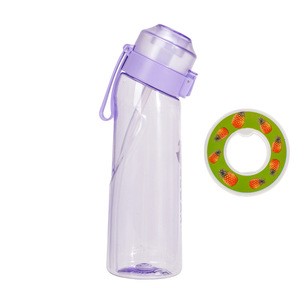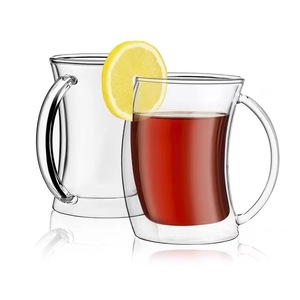(469 products available)


















































 Ready to Ship
Ready to Ship

















 Ready to Ship
Ready to Ship





















































































































































Crooked cups often emerge as a result of a potter's wheel's rotation. These cups, with their intentionally irregular and slanted designs, serve as functional pottery. They find their purpose across various domains, including home decor, dining, and special occasions. Here's an overview of the different types of crooked cups:
Handmade crooked cups
Handmade crooked cups stand out for their unique and irregular designs. Crafted by artisans, each cup exhibits slight variations in shape and appearance. These cups are made from different materials, including clay, wood, and glass. Their one-of-a-kind characteristics make them visually appealing. They often reflect the artist's style and the handmade process's creativity. Whether it's a mismatched tea set or a single crooked coffee mug, these handmade creations add charm and individuality to the drinking experience.
Vintage crooked cups
Vintage crooked cups transport users to a bygone era, adding a touch of nostalgia. Often found at antique shops or flea markets, these cups are usually made of porcelain or ceramic. Their crooked designs result from the craftsmanship of yesteryears. Using vintage crooked cups can evoke memories and create a unique ambiance, whether sipping tea, displaying as a collector's piece, or using them in retro-themed events.
Ceramic crooked cups
These crooked cups are made of ceramic and come in various styles, such as rustic, modern, and bohemian. They are often adorned with glazes that have different finishes. Ceramic crooked cups are perfect for creating a mismatched tea set. They are also great for serving wine, cocktails, and other beverages.
Wooden crooked cups
Wooden crooked cups have an ergonomic design and are sturdy. They are usually designed with a crooked handle that makes them easy to hold. These crooked cups are used to serve water and other beverages. They are among the best eco-friendly options for serving drinks. Wooden crooked cups can be inscribed with messages or quotes, making them perfect gifts for loved ones on various occasions.
Glass crooked cups
Glass crooked cups are designed with a slanted or tilted structure. They are mostly used to serve alcoholic beverages like cocktails and wines. Their unique and asymmetrical design makes them ideal for serving beverages at parties, informal gatherings, and restaurants. Glass crooked cups come in various shapes and sizes. They are often embellished with artistic designs or patterns. They are easy to clean and maintain.
Material
Wooden crooked cups are usually made of hardwoods such as maple, oak, or cherry. These materials are chosen for their strength and durability. The wood is typically treated with food-safe finishes to enhance the appearance and protect it from moisture. Ceramic crooked cups can be made from stoneware or porcelain clay. They are fired at different temperatures to achieve varying strengths and finishes. The glazing process is crucial for ceramics, providing a waterproof surface that can be colored or textured. Metal cups can be stainless steel, aluminum, or brass. These materials are resistant to corrosion and can maintain heat well for hot beverages. They are often used for their lightweight properties and unique, modern aesthetic.
Shape and Size
One of the defining features of crooked cups is their irregular shape. Each cup may have a differently shaped body, and this inconsistency adds to its charm. The handle may also be misshaped or placed oddly, making it difficult to hold the cup. But these features don't make the cup any less functional. In fact, they often make it more interesting to use. The size of a crooked cup can vary widely. Some are small and delicate, perfect for a shot of espresso or a thimbleful of tea. Others are larger, resembling more a bowl than a cup, inviting a leisurely sip of morning coffee or an afternoon brew.
Color Options
Due to the different materials used, crooked cups come in various colors. Wooden cups usually have earthy tones due to the wood material. Ceramic cups can have various colors depending on the glazing process. Metal cups also come in different colors, depending on what they are coated with.
Texture
The texture of a crooked cup depends on the material used. Wooden cups can have a smooth texture due to sanding, and some may have a rough texture for a more rustic look. Ceramic cups often have a smooth texture because of the glazing. However, some artists may add textured glazes for a more tactile experience. Metal cups usually have a smooth texture but can also have hammered or brushed finishes, adding visual and tactile interest.
Artistic Elements
Each crooked cup often has artistic elements reflecting the maker's creativity. In wood, this can be carved designs or the natural patterns of the wood grain. Ceramic cups may have hand-painted designs or stamped impressions. Metal cups can have etched patterns or be shaped into whimsical forms, like animals or abstract designs.
A crooked cup can be used in different scenarios. Some of them are as follows.
Artistic Purpose:
A crooked cup can be an inspiration for artists. It can be a source of inspiration to paint or sketch. It can also be a subject of photography. It shows the beauty of imperfections. It fits well in still life compositions. It can add charm and character to the artwork. Using crooked cups in art can show abstract ideas. They can represent unique perspectives. They can also represent the flaws in life.
Mindfulness Practice:
A crooked cup can help in mindfulness practice. People can use it to focus on the present moment. They can use it to appreciate the details of the cup. It also helps to appreciate its uniqueness. The cup can remind users to accept things as they are. They also learn to embrace the imperfect aspects of life. It encourages a more compassionate and less judgmental mindset. It is a crooked cup that has a calming effect. It helps to reduce stress and increase awareness.
Creative Activities:
A crooked cup can make creative activities more fun. It is suitable for both kids and adults. They may use it to create a crooked cup tower. They can use it to make other crafts. The cup can also be used to make a gift. It can be a decorative flower vase or a bird feeder. The cup can encourage innovative thinking. It can also encourage problem-solving. It urges people to repurpose everyday objects.
Play and Leisure:
A crooked cup can add fun to different games. It can be fun as a drinking game. Players have to balance the contents. The contents must not spill out. The cup can also be a piece of a board game. It can be a crooked cup bowling game. Players have to knock down stacked cups. The crooked cup can be a reminder to enjoy playful moments. It can be a reminder to embrace spontaneity and laughter.
When choosing a crooked cup, there are several things to consider, from the aesthetics to the functionality. First and foremost, it is important to consider what one will use the crooked cup for. If it is going to be used as a decorative piece or as part of a collection, then the appearance and unique features of the cup may take precedence. However, if it will be used for practical purposes such as drinking tea or coffee, then its usability and comfort in holding should be prioritized.
Additionally, one should also take into account the material from which the crooked cup is made. Different materials such as ceramics, wood, or glass offer different tactile experiences and visual qualities. For instance, wooden crooked cups may give a warm rustic feel while ceramic ones can come in various colors and textures. Moreover, when choosing a crooked cup, one should also consider its size and capacity. Some may prefer smaller cups that require frequent refills, while others may like larger ones that can hold more liquid at once.
Furthermore, it is also essential to look at the maintenance aspect of the crooked cup. Certain materials may require special care or are not dishwasher safe, which could be inconvenient for some users. Lastly, the uniqueness and character of the crooked cup should be considered. Each crooked cup is often handcrafted and may have its own imperfections and distinctive features. Choosing a cup with a character that resonates with oneself can make the experience of using it more enjoyable and meaningful.
Q1: What are crooked cups?
A1: Crooked cups are irregular or tilted vessels that come in different materials and designs. They add a whimsical, charming touch to tableware and are often used in art, coffee, or as decorative pieces.
Q2: What materials are crooked cups made of?
A2: Crooked cups can be made from various materials, including ceramics, glass, wood, and metal. Ceramic and glass cups might have intentional design flaws during the crafting process, while wooden cups can have natural irregularities. Moreover, metal cups can be designed crooked to form unique, creative drinking vessels.
Q3: What occasions are crooked cups suitable for?
A3: Crooked cups can be used for different occasions, including everyday use, special events, and themed parties. Their unique designs can make ordinary gatherings more interesting and memorable.
Q4: How do crooked cups enhance the aesthetics of a space?
A4: Crooked cups add a unique charm and character to the aesthetic of a space. They are often used in art installations, exhibitions, and galleries, while crooked cups used as decorative pieces can spice up desks, shelves, and tabletops.
Q5: Are crooked cups functional?
A5: Yes, crooked cups are functional. Even though their designs are unconventional, they can still hold liquids and are used like regular cups. Their unique designs can add a fun and interesting element to drinking.